Quite the impressive storm cell this morning. While we only got a light shot of rain, the light and sound show was very cool. This video from Jessica Fey gives a sample.
Tag Archives: lightning
Severe Weather 101 – Lightning and lightning safety
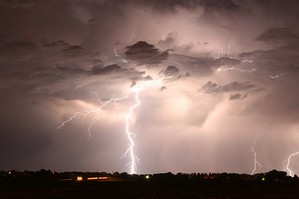
Of all the weather types associated with thunderstorms – hail, tornadoes, floods, etc – lightning is usually the most dangerous. In the United States there are an estimated 25 million cloud to ground lightning flashes each year and each one is a potential threat to life and property.
During the past 10 years there has been an annual average of 39 lightning fatalities in the United States. Last year, 23 people lost their lives due to lightning.
Colorado is ranked # 2 in lightning related deaths (2001 – 2010) so the danger this presents to life and property is very significant for us. It is interesting to note though that Colorado ranks only 32nd in the number of cloud to ground strikes over that same period. Which means, in short, we have fewer strikes than many other states and yet more deaths.
This highlights the fact that, quite frankly, folks here in Colorado are not aware of the dangers lightning presents and they do not take proper steps to protect themselves. One of the great things about Colorado are the outdoor activities we all enjoy, but there comes a time when we need to head indoors.
Continue reading Severe Weather 101 – Lightning and lightning safety
Severe Weather Awareness Week in Colorado gets started

As is customary as we get further into spring, this coming week has been proclaimed Severe Weather Awareness Week. This is an opportunity for the public to get reacquainted with the dangers severe weather presents in Colorado.
Tornadoes, lightning, hail, severe wind and flooding are very real hazards that Coloradans face every year during severe weather season. It is important that you know what to do to protect you and your family.
Just 12 years ago in what was Denver’s weather story of the year, we suffered through a period of unusually severe weather including a tornado that ripped through the Southlands Mall.
Thirteen years ago on May 22nd an EF3 tornado raced north through Weld and Larimer counties resulting in one fatality near Windsor and causing several injuries and destroyed or heavily damaged hundreds of homes.
And of course in 1981 Thornton was the site of the worst tornado to ever strike the Denver metro area.
Tornadoes may get all the press but other severe weather can be damaging and deadly.
Just eight years ago, late summer flooding caused millions of dollars of damage across northeastern Colorado. It was 45 years ago that thunderstorms brought a raging torrent of water down the Big Thompson and caused one of Colorado’s worst natural disasters. Eleven years ago hail struck the Thornton area causing damage to homes and vehicles.
In conjunction with the National Weather Service’s statements on Severe Weather Awareness Week, ThorntonWeather.com will be publishing our Severe Weather 101 series. Each day this week a weather hazard will be discussed in depth and we will outline protective measures you can take to keep yourself and your family safe. Please be sure to check back every day to read these important message.
Continue reading Severe Weather Awareness Week in Colorado gets started
Lightning and wildfires – Hand in hand hazards
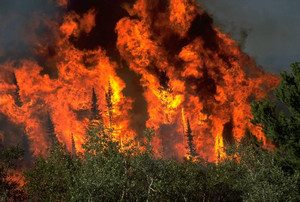
Wildfires are not strictly a weather-related threat. The weather does however play a significant role in starting fires and in the ability of firefighters to battle them.
From the National Weather Service:
PUBLIC INFORMATION STATEMENT
NATIONAL WEATHER SERVICE GRAND JUNCTION CO
500 PM MDT SAT JUNE 26 2021
Colorado Lightning Safety Week concludes today…with wildfires being the final topic.
During the past week we have presented lightning information and safety rules. Although wildfires are not an actual weather phenomenon…wildfires are directly related to lightning and other weather elements.
Normally…the wildfire threat in Colorado increases significantly after the middle of June and usually peaks in early July…and remains high through august and early September. Colorado averages about 2500 wildfires each year.
About half of all forest fires in Colorado are ignited by lightning. Additionally…many rangeland and wheat field fires are caused by lightning. Many of these lightning caused wildfires occur in the absence of rain and are the result of what is referred to as dry thunderstorms.
Lightning is often accompanied by strong winds from thunderstorms. These winds can quickly turn smoldering organic material into a raging fire. Thunderstorm winds tend to be erratic in direction and speed…posing one of the greatest dangers for firefighters.
Lightning that strikes the ground is usually divided into two categories…negative and positive strikes… Depending on the ionic source region of the thunderstorm. The negative strikes are far more common than positive strikes. The positive strikes are more intense and have a longer duration than the negative strikes and are more likely to ignite a fire. Lightning detection technology provides land managers and weather forecasters with the ability to identify the general location and charge category of each lightning strike.
National Weather Service forecasters help land managers and firefighters by producing fire weather zone forecasts on a daily basis. Spot fire weather forecasts are also provided for those who work on prescribed burns or specific wildfires. Forecasters also issue red flag warnings for use by land managers when the combination of dry vegetation and critical weather conditions will result in a high potential for the development and spread of
Wildfires. Land managers…in turn… Typically inform the general public of the fire danger in national parks…forests… And other public lands.
During periods of extreme fire danger in forests and rangelands…
- You should avoid being in areas where you might become trapped by a wildfire.
- You should avoid the use of matches or anything else which could ignite a fire.
- Make sure that hot parts of motorized equipment…such as mufflers…are not allowed to come in contact with dry grasses or other potentially flammable material.
- If you become trapped or cut off by a wildfire seek shelter in areas with little or no fuel…such as rock slide areas or lakes.
For more information on wildfires and fire safety…please check out the following web addresses…
- http://fire.boi.noaa.gov
- http://www.nifc.gov
- http://dola.colordo.gov/dem/public_information/wildfire.htm
Lightning Safety and Wildfire Awareness Series:
- Lightning Safety and Wildfire Awareness Week Introduction
- Lightning and wildfire safety overview
- The science of thunderstorms and lightning
- Outdoor lightning safety – When thunder roars, go indoors
- Indoor lightning safety – Staying safe in your home or office
- When lightning strikes – Rendering aid and the lasting effects of a strike
- Lightning and wildfires – Hand in hand hazards
When lightning strikes – Rendering aid and the lasting effects of a strike
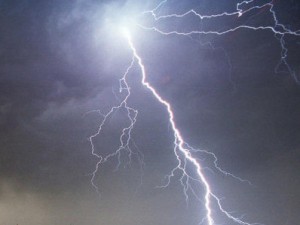
Knowing what to do when lightning strikes someone is critical to helping them survive. As with many serious injuries, immediate action must be taken. After the event, lightning strike victims oftentimes face a number of health and mental challenges.
From the National Weather Service:
PUBLIC INFORMATION STATEMENT
NATIONAL WEATHER SERVICE BOULDER CO
600 AM MDT FRI Jun 25 2021
Colorado Lightning Safety Awareness Week continues through tomorrow. Today we discuss lightning medical issues for survivors.
The facts about lightning strike victims:
In Colorado, nearly a half million cloud-to-ground lightning flashes are documented each year. With millions of visitors and extensive outdoor activities, it is not surprising that, each year on average, three people are killed by lightning in the state of Colorado while 13 are injured. Last year, two people were killed by lightning in the Centennial State while seven were injured.
While any lightning fatality is tragic, injuries caused by lightning can be devastating to both the victim and the family. For those who have a family member or relative that suffers a significant disability from lightning, life changes forever. In addition to the physical pain and mental anguish suffered by the victim and their family, the incident may lead to a loss of income for all involved as medical expenses can drain the family’s financial resources.
If someone is struck by lightning, it is critically important that they receive the appropriate medical attention immediately. Some deaths can be prevented if the victims are attended to promptly. Lightning victims do not carry an electrical charge and are safe to handle. First, check to see that the victim is breathing and has a pulse, and start cardio-pulmonary resuscitation, if needed. Then have someone dial 911. If possible, move the victim to a safer place. Do not let the rescuers become lightning victims. Lightning can strike the same place twice.
Lightning strike victims may face many mental challenges that they will have to live with for the rest of their lives. When the brain is affected by a lightning strike, the person often has difficulty with many of the mental processes that most people take for granted. The person may suffer from short-term memory loss, and may have difficulty remembering new information and accessing old information. Victims may often find it very difficult to carry on more than one task at a time, and may be easily distracted. Their personality may change and they may become easily irritated.
Lightning strike victims often become easily fatigued and may become exhausted after only a few hours of work. This may be because mental tasks that were once automatic may now require intense concentration to accomplish. Although some victims may sleep excessively at first, after a few weeks many find it difficult to sleep more than two or three hours at a time.
Another common long-term problem for survivors is pain.
Medically, pain is difficult to quantify. Lightning strike victims often suffer irreparable nerve damage that causes intense pain that affects the ability to function. Many survivors complain of chronic headaches, some of which are very intense and debilitating.
Lightning Strike and Electric Shock Survivors International is a support group for individuals and families that are struggling with life after a lightning injury. Helpful information is available at their web address: www.lightning-strike.org
In addition, NOAA’s lightning website contains abundant information on lightning safety and can be found at: www.lightningsafety.noaa.gov
Lightning information specific for the State of Colorado can be found at: www.weather.gov/pub/lightning
The lightning topic for tomorrow will be lightning caused fires.
Lightning Safety and Wildfire Awareness Series:
- Lightning Safety and Wildfire Awareness Week Introduction
- Lightning and wildfire safety overview
- The science of thunderstorms and lightning
- Outdoor lightning safety – When thunder roars, go indoors
- Indoor lightning safety – Staying safe in your home or office
- When lightning strikes – Rendering aid and the lasting effects of a strike
- Lightning and wildfires – Hand in hand hazards
Indoor lightning safety – Staying safe in your home or office
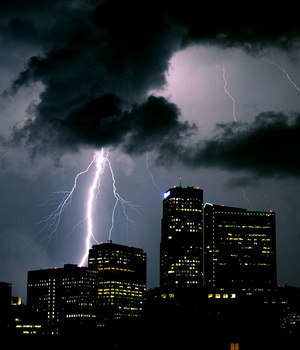
Certainly the dangers of lightning are most prevalent outdoors and being indoors is the safest place to be when thunder is heard. Even inside your home or business lightning can be damaging and cause significant injury.
From the National Weather Service:
PUBLIC INFORMATION STATEMENT
NATIONAL WEATHER SERVICE GOODLAND KS
600 AM MDT THU JUN 24 2021
Statistics tell us that we are much less likely to become a lightning strike victim if we are inside a substantial structure such as a home or office building. In 2016, thirty eight people in the United States were killed by lightning, and all of these fatalities occurred outdoors. While nearly all people who are injured or killed by lightning were outdoors, a small percentage of people are injured by lightning while indoors. Therefore, it is important to discuss lightning safety while indoors.
The dangerous electrical current associated with a lightning strike typically enters a structure through wires, cables or pipes that connect to the building from the outside. Lightning can also directly enter into a structure through an open window, door or garage door. Once in a structure, the dangerous current can travel through the electrical, phone, cable and plumbing systems and through metal wires or bars in concrete walls or flooring.
Corded electronic devices are the leading cause of indoor lightning injuries in the United States. These include personal computer keyboards, game consoles, and corded phones. Other injuries have occurred when people were close by to televisions which connect to an outside cable or satellite system. Open windows, doors and garage doors allow for a direct strike to enter a home, so make sure all windows and doors are closed when lightning is occurring. Never watch a lightning storm from a porch or open garage door. There are several You-Tube videos that show people being injured by lightning while they were recording lightning from their porch or open garage door.
It is very important to stay away from any plumbing when lightning is occurring outside. This includes sinks, bathtubs and showers. When lightning is occurring, do not hand wash dishes, do not give kids a bath, and do not take a shower. It is best to wait to do laundry until after the storm goes by as washers and dryers are connected to both the electrical and plumbing systems.
People have also been injured while leaning and standing near concrete in their homes and offices. This is due to metal rebar which is in the concrete, and this metal acts as a conductor when lightning hits the building.
A house or other substantial building offers the best protection from lightning. In contrast, many small shelters such as bullpens, picnic shelters, sheds or tents (no matter what the size) offer no protection from lightning, and should be avoided at all cost.
Here is a summary of lightning safety tips for inside the home:
1. Avoid corded electronics and electrical equipment.
2. Avoid contact with plumbing, such as taking a shower, bathing, hand washing dishes or doing laundry.
3. Stay away from windows, doors, garages and porches.
4. Do not lie on concrete floors or lean against concrete walls.
5. If a substantial building is not nearby, an enclosed car or truck offers excellent protection from lightning.
Below are a couple of web sites that contain additional lightning information:
NOAA’s lightning website which contains abundant information on lightning safety can be found at: www.lightningsafety.noaa.gov
Lightning information specific for the State of Colorado can be found at: www.weather.gov/pub/lightning
The lightning topic for tomorrow will be lightning medical issues for survivors.
Lightning Safety and Wildfire Awareness Series:
- Lightning Safety and Wildfire Awareness Week Introduction
- Lightning and wildfire safety overview
- The science of thunderstorms and lightning
- Outdoor lightning safety – When thunder roars, go indoors
- Indoor lightning safety – Staying safe in your home or office
- When lightning strikes – Rendering aid and the lasting effects of a strike
- Lightning and wildfires – Hand in hand hazards
Outdoor lightning safety – When thunder roars, go indoors
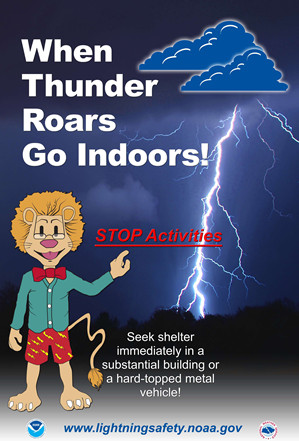
Statistics provide insight into the dangers of severe weather and lightning is one of the most deadly. Over the past decade Colorado has been the second deadliest state for lightning and many of these fatalities could have been avoided if the victims had remembered one key phrase: When thunder roars, go indoors.
From the National Weather Service:
PUBLIC INFORMATION STATEMENT
NATIONAL WEATHER SERVICE GRAND JUNCTION CO
600 AM MDT WED JUNE 23 2021
Colorado Lightning Safety Awareness Week continues through Saturday. Yesterday we discussed the science of lightning. Today we will cover outdoor lightning safety.
Outdoors is the most dangerous place to be during a thunderstorm.
Each year…nearly all people in the United States who are injured or killed by lightning were involved in an outdoor activity. They were struck while working outside…were at or participating at an outdoor sporting event…were boating or fishing. They were struck while hiking…mowing the lawn or simply going to or from their car. Quite a few were on their own property when they were struck.
Unfortunately…there is no place outside that is safe from lightning. The only safe place to be when lightning is occurring is either inside a substantial building…or an enclosed automobile.
Here are some important things to remember before venturing outdoors…
An informed decision will help you avoid being in an area where lightning is expected to occur. Before heading out…get an updated forecast. Stay tuned to NOAA weather radio…check national weather service web sites…or access your favorite weather apps on your cell phone for the latest forecast.
In Colorado…it is important to remember that thunderstorms typically develop in the mountains after 11 am. So it is best to plan your climbing or hiking trip so that you are coming down the mountain by late morning.
If thunderstorms are in the forecast…consider planning an alternate indoor activity or make plans which will allow you to quickly get into a safe shelter.
Once you are outside…keep up-to-date on the weather via your smart phone or portable NOAA weather radio receiver. Check for updated forecasts. Check if storms are near you by checking the latest radar imagery on your cell phone. There are now several smart phone apps you can purchase that show you real-time lightning activity in your area. Do not forget to simply look around you to make sure storms are not developing in your vicinity.
We will now discuss two outdoor scenarios. The first is what to do if you are outdoors and a safe location is nearby…while the second scenario is what to do if you are outdoors and no safe location is nearby.
If you are outside…such as a park…a lake…or an outdoor sporting event…know where the nearest safe location is located at.
A safe location is any substantial building…such as a business…a home…or a church. Any enclosed hard topped automobile also offers excellent protection from lightning. Once you hear thunder or see lightning…immediately stop what you are doing and quickly get to the safe shelter. Do not wait until the rain starts to seek safe shelter. Once inside a safe shelter…it is recommended you stay there for 30 minutes after the last rumble of thunder.
Past history has shown that most people who were outdoors and were injured or killed by lightning had access to a safe shelter nearby.
Do not wait to seek safe shelter when lightning threatens. When you hear thunder or see lightning…it is important for you…and your family…to act quickly.
It is critically important to avoid shelters that are not safe from lightning…including picnic shelters…bullpens…tents and any other small buildings that are open to the elements.
Never…never…get under a tree to seek shelter from lightning.
It is important that all sports leagues and other outdoor groups have a lightning response plan that is understood and consistently applied for the safety of the participants. Part of the plan would include a designated weather watcher at each outdoor event with the authority to postpone or cancel the event due to the threat of lightning. It is also important that people know where to seek safe shelter if a storm threatens. As we have seen recently…the NCAA…the NFL and MLB now delay games when lightning is in the area.
Our second scenario involves what you can do to reduce your chances of being injured or killed by lighting if no safe shelter is nearby.
This situation typically occurs to people who are hiking or camping in the backcountry. Unfortunately…in this scenario…there is not much you can do to reduce your risk from being struck by lightning.
The best thing to do is move away from tall isolated objects…such as trees. Stay away from wide open areas. Stay as low as possible with your feet close together if lightning is nearby. If you are with a group of people…spread out…that way if someone is struck by lightning…the others can offer first aid. If camping in the backcountry…place your tent in a low area away from tall isolated trees.
Remember…when thunder roars…go indoors!
There are a couple of web sites that contain additional lightning information.
NOAA’s lightning website which contains abundant information on lightning safety can be found at…
Lightning information specific for the state of Colorado can be found at…
The lightning topic for tomorrow will be on indoor lightning safety.
Lightning Safety and Wildfire Awareness Series:
- Lightning Safety and Wildfire Awareness Week Introduction
- Lightning and wildfire safety overview
- The science of thunderstorms and lightning
- Outdoor lightning safety – When thunder roars, go indoors
- Indoor lightning safety – Staying safe in your home or office
- When lightning strikes – Rendering aid and the lasting effects of a strike
- Lightning and wildfires – Hand in hand hazards
The science of thunderstorms and lightning
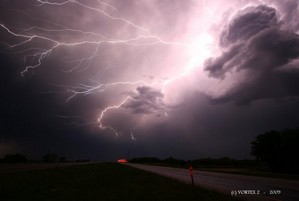
Thunderstorms and their associated hazards frequently make appearances in Colorado during the spring and summer months. Lightning presents one of the damaging – and deadly – aspects of these storms and knowing more about the science behind the phenomena helps us to better protect ourselves.
As part of Lightning and Wildfire Safety Awareness Week, this installment from the National Weather Service gives more information on the science behind these bolts of electricity.
From the National Weather Service:
PUBLIC INFORMATION STATEMENT
NATIONAL WEATHER SERVICE BOULDER CO
600 AM MDT TUE Jun 22 2021
…UNDERSTANDING THE SCIENCE OF THUNDERSTORMS AND LIGHTNING…
Every thunderstorm produces lightning. Lightning is a giant spark that moves within the cloud…between clouds…or between the cloud and the ground. As lightning passes through the air…it heats the air rapidly to a temperature of about fifty thousand degrees Fahrenheit. This causes a rapid expansion of the air near the lightning channel. This rapid expansion causes a shock wave that we hear as thunder.
Thunderstorms will form if there is enough moisture and instability in the atmosphere. As the sun warms the air near the ground…pockets of warmer air begin to rise and cool. Condensation of water vapor causes cumulus clouds to form. Continued heating can cause these clouds to continue to grow upward into the atmosphere. Towering cumulus clouds may be one of the first indications of a developing thunderstorm. The mature thunderstorm has both an updraft of rising motion and a downdraft of sinking cool air accompanied by rain and sometimes hail.
Thunderstorms grow tens of thousands of feet into the atmosphere. In the cloud…precipitation forms as ice crystals…hail…and rain. Collisions between ice particles cause a charge separation…and positively charged ice crystals are carried by the updraft high in the thunderstorm. The heavier hail gathers a negative charge and falls toward the lower part of the storm. The top of the cloud becomes positively charged and the lower part of the storm becomes negatively charged.
Due to the pool of negative charges in the lower part of the storm…a pool of positive charges will develop along the ground and follow the cloud like a shadow. Farther away from the cloud base…but under the positively charged anvil…a strong negative charge may be induced.
Cloud-to-ground lightning can either be a negatively charged flash or a positively charged flash. The negative flash usually occurs between the negative charges in the lower part of the storm and the positive charges on the ground under and near the cloud base. Positive flashes usually occur between the positively-charged upper levels of the storm and the negatively-charged area surrounding the storm.
In the negative cloud-to-ground flash…an invisible…negatively-charged step leader forms near the cloud base and surges downward toward the ground. As this step leader approaches the ground… streamers of positive charge move upward from trees…buildings…and other objects on the ground. When these streamers meet the step leader…the connection is completed…and the result is lightning. The entire process takes place in fractions of a second.
If you are under a thunderstorm and your hair rises…you are in an area where the positive charges are rising up objects towards the storm. It is a dangerous location…because lightning may be about to strike.
The process for a positive flash is similar except that a positive channel usually originates in the anvil of the storm and surges downward. In this case…streamers of negative charge shoot up to meet the positively-charged channel as it approaches the ground. When a connection is made…a positive flash of lightning occurs.
While both negative and positive flashes of lightning can be deadly…the positive flashes generally are more destructive as they typically deliver more overall electrical charge to the ground…and they remain in contact with the ground surface for a longer period of time as compared to a negative cloud-to-ground flash.
The best advice in order to minimize your risk of becoming a lightning strike victim is to get indoors into a substantial shelter the second you hear thunder…and to remain there for at least 30 minutes after the last rumble of thunder. In general…when thunder roars…go indoors. An enclosed hard topped automobile is also a safe place to be during thunderstorms.
For additional information about lightning or lightning safety…visit NOAA’s Lightning Safety Awareness web site at (in lower case):
http://www.lightningsafety.noaa.gov
Lightning Safety and Wildfire Awareness Series:
- Lightning Safety and Wildfire Awareness Week Introduction
- Lightning and wildfire safety overview
- The science of thunderstorms and lightning
- Outdoor lightning safety – When thunder roars, go indoors
- Indoor lightning safety – Staying safe in your home or office
- When lightning strikes – Rendering aid and the lasting effects of a strike
- Lightning and wildfires – Hand in hand hazards
Lightning and wildfire safety overview
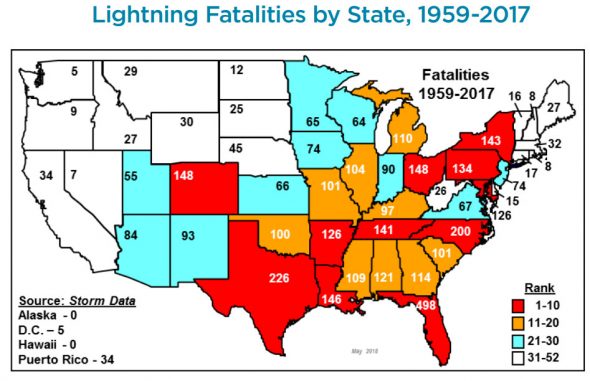
Colorado has the rather unenviable distinction of ranking fourth in the United States for lightning-related fatalities. During the spring and summer the nice weather finds many residents outside and while clear skies are the norm, storms oftentimes loom and present a very real hazard to residents.
From the National Weather Service:
PUBLIC INFORMATION STATEMENT
NATIONAL WEATHER SERVICE PUEBLO CO
600 AM MDT MON JUN 21 2021
Colorado Lightning Safety Awareness Week continues through Saturday. Today we discuss the lightning threat across the Centennial State.
In the United States, there are an estimated 25 million cloud-to-ground lightning flashes per year, and each one is a potential threat to both life and property. During the past thirty years, 44 people have been killed each year by lightning on average, while during the last ten years this number is 27. Last year, 16 people were killed by lightning, while many others were injured. All of the people who were killed by lightning in 2017 were involved in outdoor activities.
In Colorado last year, lightning killed 2 people and injured 2. During the past thirty seven years, on average, Colorado has had 3 lightning fatalities and 12 injuries per year.
Since 1980, El Paso County, including the Colorado Springs metro area, has had the dubious distinction of having the most lightning casualties, with 10 fatalities and 84 injuries. Larimer County has had 10 fatalities and 75 injuries, while Jefferson County has had 9 fatalities and 38 injuries.
Because it usually affects one or two victims at a time, and does not cause the destruction left in the wake of tornadoes or hurricanes, lightning generally receives less attention.
Many people do not act in a timely manner to protect their lives, and the lives of others, simply because they do not understand all the dangers associated with thunderstorms and lightning.
You need to become aware of the situations that put you at a greater risk of being struck by lightning, and what you can do to reduce that risk. While nearly all people take some protective actions when rain, hail and wind are occurring with thunderstorms, many leave themselves vulnerable to being struck by lightning as thunderstorms approach, move overhead and move away.
Lightning can strike more than 10 miles from the rain area of a thunderstorm. That distance is about as far as you can hear thunder. If you can hear thunder, you could be in danger of being struck by lightning. When Thunder Roars, Go Indoors!
Most lightning deaths and injuries in Colorado occur during the afternoon when lightning is most likely to develop, and when people are more likely to be outside. Quite a few lightning fatalities occur when little or no rain is falling.
The chance that you will be struck by lightning in the United States is about 1 in 960 thousand for each year of your life. However, your chance of being struck will depend on whether you consistently practice all the lightning safety rules.
Lightning starts around half of the forest and rangeland wildfires across the state. Colorado averages around 2500 wildfires each year. Many of these lightning caused fires occur with very little or no rain. These storms often generate gusty winds, which can fan the flames of the fire.
During this Lightning Safety Awareness Week, the National Weather Service will provide a variety of information on lightning in Colorado.
On Tuesday, the science of lightning will be discussed.
On Wednesday, the topic of the day is outdoor lightning risk reduction. On Thursday, we will have information on indoor lightning safety.
On Friday, information for lightning strike survivors will be provided. On Saturday, lightning and wildfire information will be available.
When planning outdoor activities, check out the hazardous weather outlook and the latest forecast, which include thunderstorm and lightning potential. Make sure you get the specific forecast information of the location you will be visiting. The web sites for National Weather Service offices which cover Colorado and issue these products are…
Denver/Boulder…www.weather.gov/den Grand Junction….www.weather.gov/gjt Pueblo……………www.weather.gov/pub Goodland…………www.weather.gov/gld
NOAA’s lightning website which contains abundant information on lightning safety can be found at:
www.lightningsafety.noaa.gov
Lightning information specific for the State of Colorado can be found at: www.weather.gov/pub/lightning
The lightning topic for tomorrow will be the science of lightning.
Lightning Safety and Wildfire Awareness Series:
- Lightning Safety and Wildfire Awareness Week Introduction
- Lightning and wildfire safety overview
- The science of thunderstorms and lightning
- Outdoor lightning safety – When thunder roars, go indoors
- Indoor lightning safety – Staying safe in your home or office
- When lightning strikes – Rendering aid and the lasting effects of a strike
- Lightning and wildfires – Hand in hand hazards
Lightning Safety and Wildfire Awareness Week highlights real dangers for residents
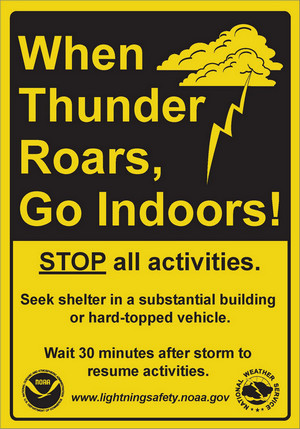
Colorado is starting its annual Lightning Safety and Wildfire Awareness Week, an important opportunity to educate residents of the dangers lightning presents. One statistic serves to highlight the very real hazard of lightning in Colorado – the Centennial State ranks as the second deadliest state for lightning fatalities in the nation.
We oftentimes read about the results of lightning strikes in our weekly look at Denver weather history. They spark wildfires, cause property damage and injuries and in some cases result in death. From 2001 to 2010 26 people were killed by lightning in Colorado – second only to Florida.
Each day during the National Weather Service’s Lightning Safety and Wildfire Awareness Week a new message is publicized covering a range of topics. From lightning safety to the science of lightning, residents can learn more about this very real danger.
The following is the introductory message from the National Weather Service for this year with links to more information. Education is key to protecting you and your family and we encourage you to study these pages and remember – When Thunder Roars, Go Indoors!
From the National Weather Service:
PUBLIC INFORMATION STATEMENT
NATIONAL WEATHER SERVICE BOULDER CO
600 AM MDT Sun Jun 24 2021
The governor of Colorado has declared the week of June 24 through June 30 as Colorado Lightning Safety Awareness Week. Lightning strikes the ground in our state over a half million times each year and with many of us participating in outdoor activities, we need to learn how to protect ourselves from lightning hazards.
Lightning is also responsible for about half of the wildfires in Colorado each year. When lightning or other conditions are conducive to a high wildfire threat, the National Weather Service will issue Fire Weather Watches or Red Flag Warnings.
During this week a series of statements will cover a variety of topics related to lightning and wildfires.
Monday…Lightning Overview for Colorado
Tuesday…The Science of Lightning
Wednesday…Outdoor lightning safety
Thursday…Indoor lightning safety
Friday…Lightning medical issues for survivors
Saturday…Lightning and wildfires
Here are a couple web sites that contain additional lightning information.
NOAA`s lightning website which contains abundant information on lightning safety can be found at: www.lightningsafety.noaa.gov
Lightning information specific for the State of Colorado can be found at: www.weather.gov/pub/lightning
Steve Hodanish
Senior Forecaster
NWS Pueblo, CO
